In September, I signed up for a four week class on Dante’s Divine Comedy. It was led by Larry Allums at the Macmillan Institute, which is the current iteration of the Cowan Center where I began my post graduate studies. We began with The Inferno.
The class was made up of current and retired teachers who share a taste for classic literature, the discussion were lively and there was never enough time. I was struck by the dense, relentless flow of metaphors. Maybe it was the translation,1 but it seems like Dante was linking every form of punishment with some beautiful aspect of the natural world.2
Like as the starlings wheel in the wintery season
In wide and clustering flocks wing-borne, wind-borne,
Even so they go, the souls who did this treason,
hither and thither, and up and down, outworn,
Hopeless of any rest - rest, did I say?
Of the least finishing of their pangs forlorn.
~translation by Dorothy Sayer~
The Flax Break
In the last Canto of Inferno, Dante describes the sight of Lucifer, encased in ice, his three mouths gnawing on traitors.3 Reading this got me thinking, are there other metaphors in his work related to the textile processes? Do modern Dante Scholars (few as there may be) know what a Flax Brake (aka Break) is? We can safely assume contemporary folks who read his poems were familiar with flax and its process.4
Each mouth devoured a sinner clenched within,
Frayed by the fangs like flax beneath a brake;
Three at a time he tortured them for sin.
~translation by Dorothy Sayer~
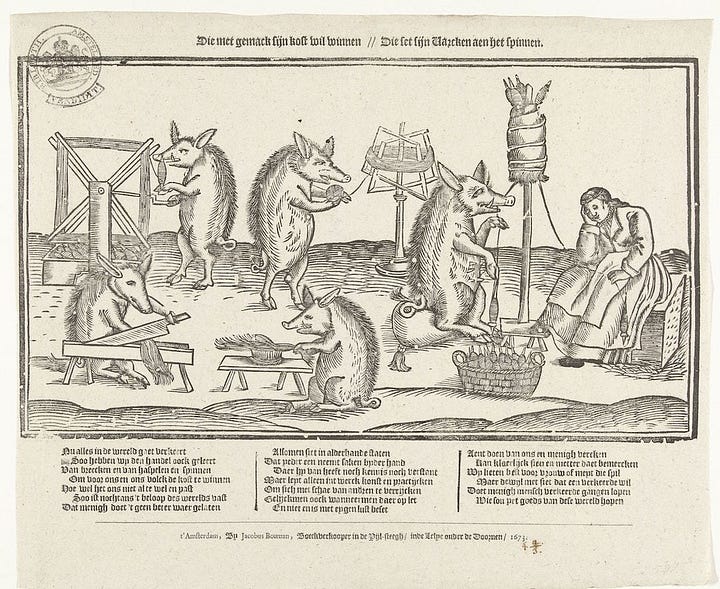
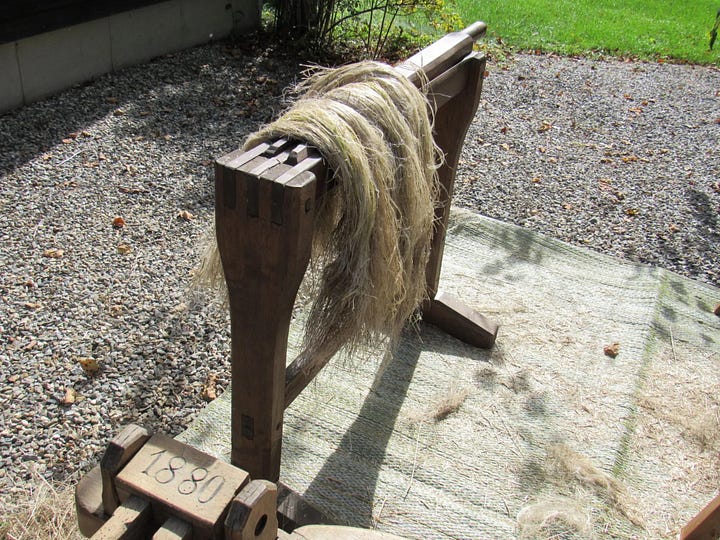
Between Feltro and Feltro
As the poem begins, Dante finds himself on path through dark woods.5 His way has been blocked by a ravening She-Wolf, who is a metaphor for avarice and greed. Virgil, the one poet that Dante admires enough to follow without question, has just arrived to show him the way out of the woods. Before they turn to go through the gates of Hell, Virgil foretells the arrival of a Greyhound, who will rule with wisdom and defeat the She-Wolf.
Dante Scholars do not agree on the meaning of this passage. There is no certainty as to who the Greyhound will be, or why he will come from between two felts (Feltro). I appreciate the fact that Ms.Sayer uses the original Italian for this puzzler. Some translations read it as geography or social station. It is agreed that the Greyhound’s arrival is a good thing.
…Until the Greyhound comes, the Master-hound,
And he shall slay her with a stroke right sore.
He’ll not eat gold nor yet devour the ground;
Wisdom and love and power his food shall be,
His birthplace between Feltro and Feltro found;
He’ll hunt the Wolf through cities far and wide,
Till in the end he hunt her back to Hell,
Whence Envy first of all her unleashed.
~translation by Dorothy Sayer~
A year ago, I picked up this little book at a small bookstore in Santa Fe, NM. The author links up three things I like: Classic literature, textiles and unsolved mysteries.
The author, Dr. Olschki, addresses many of the possible answers to the question of the Feltros. including the fact that Greyhound in Italian is Veltro.6 He describes the use of felt rugs in ceremonies, particularly coronations and funerals of emperors, in China and Central European. And, though there is reason to believe Dante would have been aware of these rituals, he doesn’t think it would answer the question, why two Felts? In his conclusion, he believes that Dante is referring to a resurgence of Castor and Pollux, twin stars but also Mythical heroes. Together, they are known as the Dioscuri and are symbolized by the round felt hats they wear. These wool felt hats have long been associated with equality and liberty.7
In his conclusion in The Myth of Felt, Olschki writes:
This course and poor material, which probably represents a first step in the history of early craftsmanship, did not remain confined to the humble sphere of every day life and practical activity. Since remotest antiquity it participated in the human trend toward higher and nobler forms of existence…
…[A] stuff made by rolling, beating, and pressing wool and animal hair could signify more than just a useful device for comfort and protection. It became also the reminder of the secret forces that direct human destiny and undertakings. In the soulless tyranny of our material civilization the old myths of felt reveal the power of primeval sentiments and imagination in dignifying and deifying the most ordinary and humble aspects of human life and ability.
Dorothy Sayers is best known for her Lord Peter Whimsy Murder Mystery Series, she is less well known for her scholarly works. Her translation of Dante’s Comedia is my favorite.
Apparently, the worst sin, in Dante mind, was treachery and the misuse of friends and family. His poem goes pretty easy on the sins named by Puritans and modern day TV preachers.
Exquisite Machinery is a newsletter that I adore and frequently recommend. In this post, she explains Flax Breaks and other tools related to flax processing.
The Dark Woods is a clear metaphor for the state of Dante’s mind, midlife, exiled from his home and family. He used the poem to describe his emotional and mental path back to poetry and his sense of self. The imagery is steeped in Medieval imagery both religious and secular.
When I read this part to my spouse, he laughed and asked if they meant Velcro. Maybe?


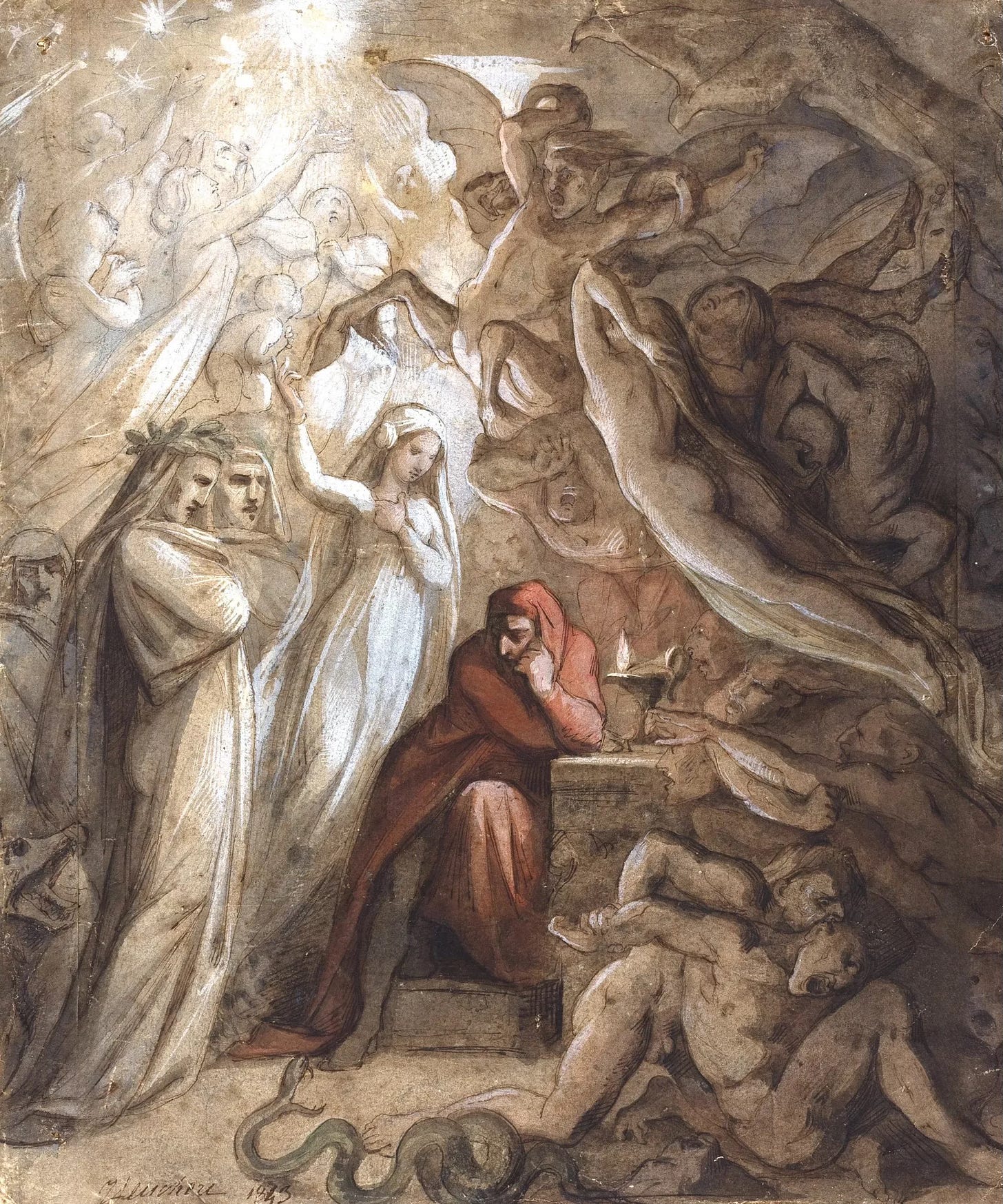
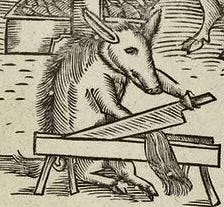
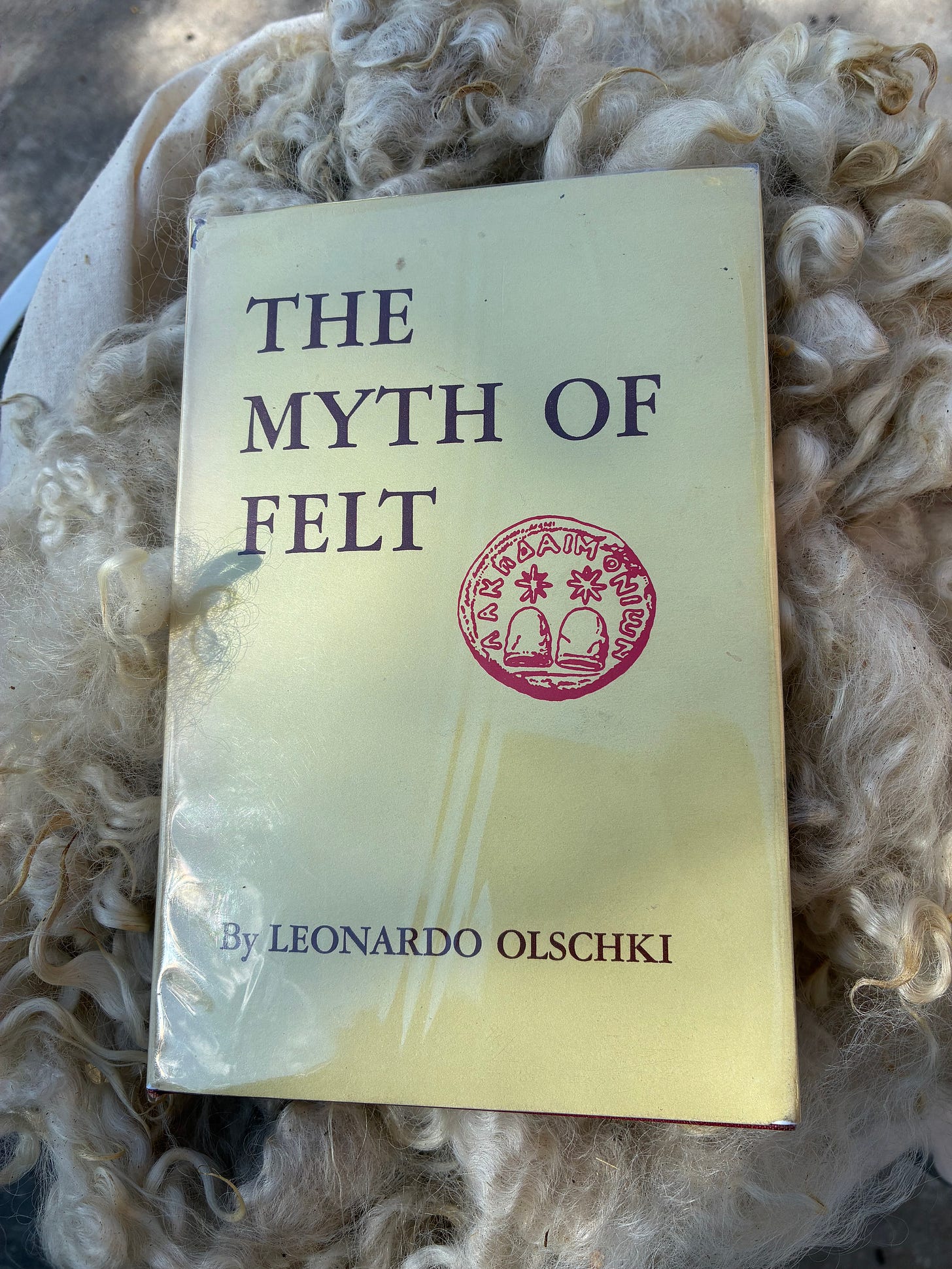
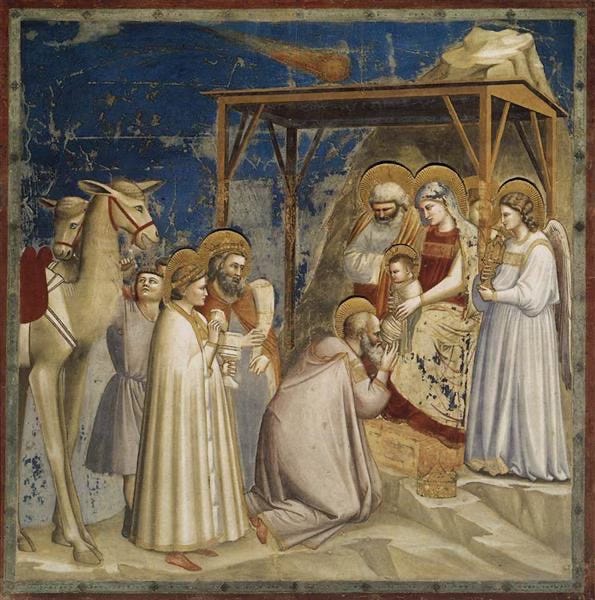
I love this! I feel like we need a table seminar just to discuss.